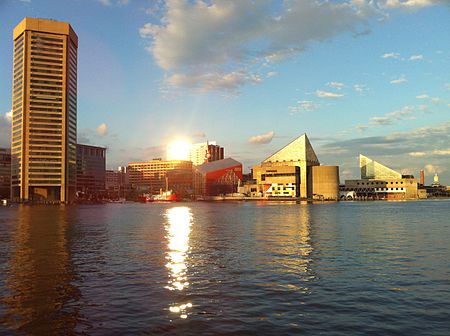Baltimore metropolitan area
Baltimore metropolitan areaBaltimore–Washington metropolitan areaGeography of BaltimoreMetropolitan areas of MarylandPages with non-numeric formatnum arguments ... and 1 more
Regions of Maryland

The Baltimore–Columbia–Towson Metropolitan Statistical Area, also known as Central Maryland, is a metropolitan statistical area (MSA) in Maryland as defined by the United States Office of Management and Budget (OMB). It is part of the larger Washington–Baltimore combined statistical area. As of 2022, the combined population of the seven counties is 2,985,871, making it the 20th-largest metropolitan statistical area in the nation. The area has the fourth-highest median household income in the United States, at $66,970 as of 2012.
Excerpt from the Wikipedia article Baltimore metropolitan area (License: CC BY-SA 3.0, Authors, Images).Baltimore metropolitan area
Key Highway, Baltimore
Geographical coordinates (GPS) Address Nearby Places Show on map
Geographical coordinates (GPS)
| Latitude | Longitude |
|---|---|
| N 39.283294444444 ° | E -76.607666666667 ° |
Address
Inner Harbor Marina
Key Highway 400
21230 Baltimore
Maryland, United States
Open on Google Maps








